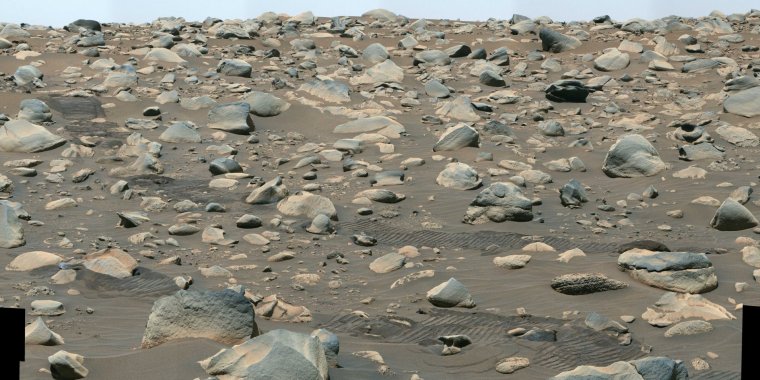| News / Space News |
Ancient River Is Helping NASA’s Perseverance Mars Rover Do Its Work
NASA’s Perseverance Mars rover sealed the tube containing its 20th rock core sample on June 23 (the 832nd Martian day, or sol, of the mission).

The Mastcam-Z imager on NASA's Perseverance rover captured a series of images on July 6 that were stitched together to show a field of boulders deposited in Jezero Crater by a fast-moving ancient river. Photo: NASA/JPL-Caltech/ASU/MSSS
This sample was drilled by the rover from an outcrop composed of tiny chunks of other rocks that were carried from elsewhere by a river in the distant past and deposited here, where they became cemented together.
Conglomerates like this one pack a lot of information about places the rover may never visit.
Perseverance is collecting these samples so that they can be brought to Earth by the NASA-ESA Mars Sample Return campaign and studied by lab equipment that’s too large and complex to bring to Mars.
Scientists will be able to look at each pebble and fragment in this core, dubbed “Otis Peak,” to determine details such as its age, what the environmental conditions were like in the river when the conglomerate formed, and whether it contains signs of ancient microbial life.
Now in its third science campaign, Perseverance is exploring the top of a fan-shaped pile of sedimentary rock that stands 130 feet (40 meters) tall.
As with the rock fragments in the Otis Peak sample, scientists believe the boulders likely formed elsewhere and were transported to their present location billions of years ago by an ancient river.
YOU MAY ALSO LIKE





